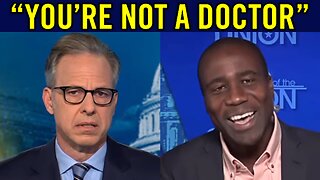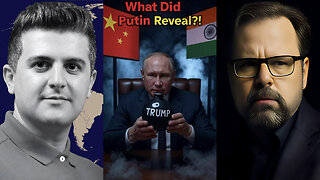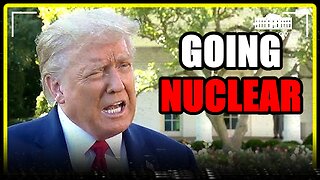Premium Only Content

Principles of Economics by Carl Menger Chapter 5.2B - Price Forming in Monopoly Trade for Quantities
You want to read the book? Get it here: https://amzn.to/4cCPIQs
Watch the next video in this series: https://rumble.com/v6uf4bp-principles-of-economics-by-carl-menger-chapter-5.2c-market-dynamics-of-mono.html
Watch the video series from the start: https://rumble.com/playlists/I48mBTB4w2c
Watch our video about Carl Menger: https://rumble.com/v61z0l2-carl-menger-the-father-of-austrian-economics-and-subjective-value.html
What happens when a monopolist offers quantities of a good instead of just one? In this video, we explore Carl Menger’s Principles of Economics, Chapter 5.2B: Price Formation in Monopoly Trade for Quantities.
Previously, we saw how prices form when a single good is sold to competing buyers. Now we move to a more complex but highly realistic case—when multiple units of a monopoly good are sold, and buyers value each additional unit less (think of diminishing marginal utility).
Imagine a farmer selling horses to multiple buyers. Each buyer values the first horse highly, but values each additional horse less and less. As the seller offers more horses, prices must adjust to reflect this reality.
Here’s the key insight: prices settle between the highest value of the weakest successful buyer and the lowest value of the strongest excluded buyer. The more goods the monopolist offers, the more buyers can enter the market—and prices fall as a result.
This mechanism explains why luxury goods are expensive when scarce and how mass production brings prices down to reach more people. It also shows how market competition naturally stratifies who can access goods at different price points.
Menger’s model gives us a clear, logical view of how prices evolve in monopoly markets—not just in theory, but in the real world of trade, production, and social dynamics.
❓ Questions This Video Answers:
-How does price formation change when selling multiple units?
-Why do buyers value additional units less?
-How does a monopolist decide what price to set?
-Why do prices fall as more units are sold?
-How do buyers cooperate to keep prices profitable?
-What determines which buyers get excluded?
-How does this model explain luxury vs mass-market pricing?
-How does competition affect monopoly pricing?
-What role does marginal utility play in pricing?
-How do prices reflect social access to monopoly goods?
00:00 - Introduction to Price Formation in Monopoly Trade for Quantities
00:14 - Monopoly Trade
00:35 - Farmer Scenario
00:59 - Offering Horses
01:33 - Cooperation and Price Settlement
02:00 - More Horses and Social Layers
02:42 - Summary
03:21 - Conclusion
#MonopolyPricing #MarginalUtility #CarlMenger
-
 7:02
7:02
Sugar Spun Run
22 hours ago $0.03 earnedBrownies from Scratch
1722 -
 10:07
10:07
The Official Steve Harvey
14 hours ago82 Years of Love, Laughs & Keeping It Real
158 -
 7:00
7:00
DropItLikeItsScott
13 hours agoIs This The Best 1911 Pistol Ever Made? Oriskany Arms 1911
441 -
 2:03:01
2:03:01
MG Show
18 hours agoBiden Auto Pen Scandal; President Trump White House Religious Liberty Commission
7.27K12 -
 14:18
14:18
Actual Justice Warrior
3 days agoBody Camera Video DESTROYS BLM Hoax
2.13K14 -
 21:17
21:17
itsSeanDaniel
1 day agoCNN Host's Vaccine Lies BACKFIRE in Front of MAGA Doctor
2.76K8 -
 1:00:48
1:00:48
Dialogue works
23 hours ago $0.84 earnedMark Sleboda: Putin DROPS a Bombshell on Trump… as China & India Shake the World!
13.3K4 -
 8:03
8:03
MattMorseTV
16 hours ago $7.39 earnedTrump just GAVE THE ORDER.
52.2K40 -
 11:23
11:23
Nikko Ortiz
15 hours agoArmy Tik Tok Fails Go Hard
7.78K1 -
 2:04:38
2:04:38
Side Scrollers Podcast
19 hours agoEveryone HATES Baseball Karen + Gaming’s Newest Virtue Signal + MORE | Side Scrollers Live
31.8K7